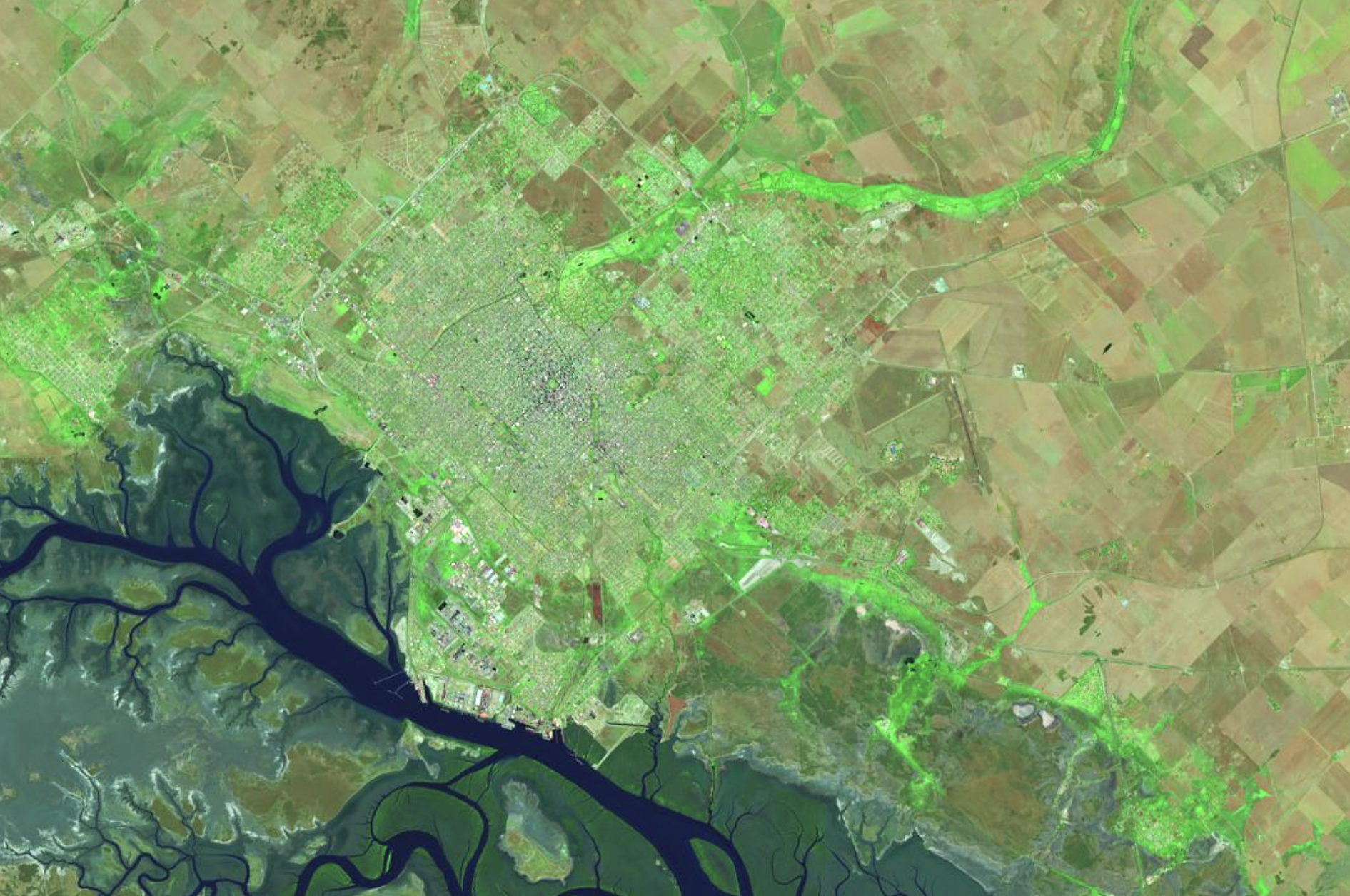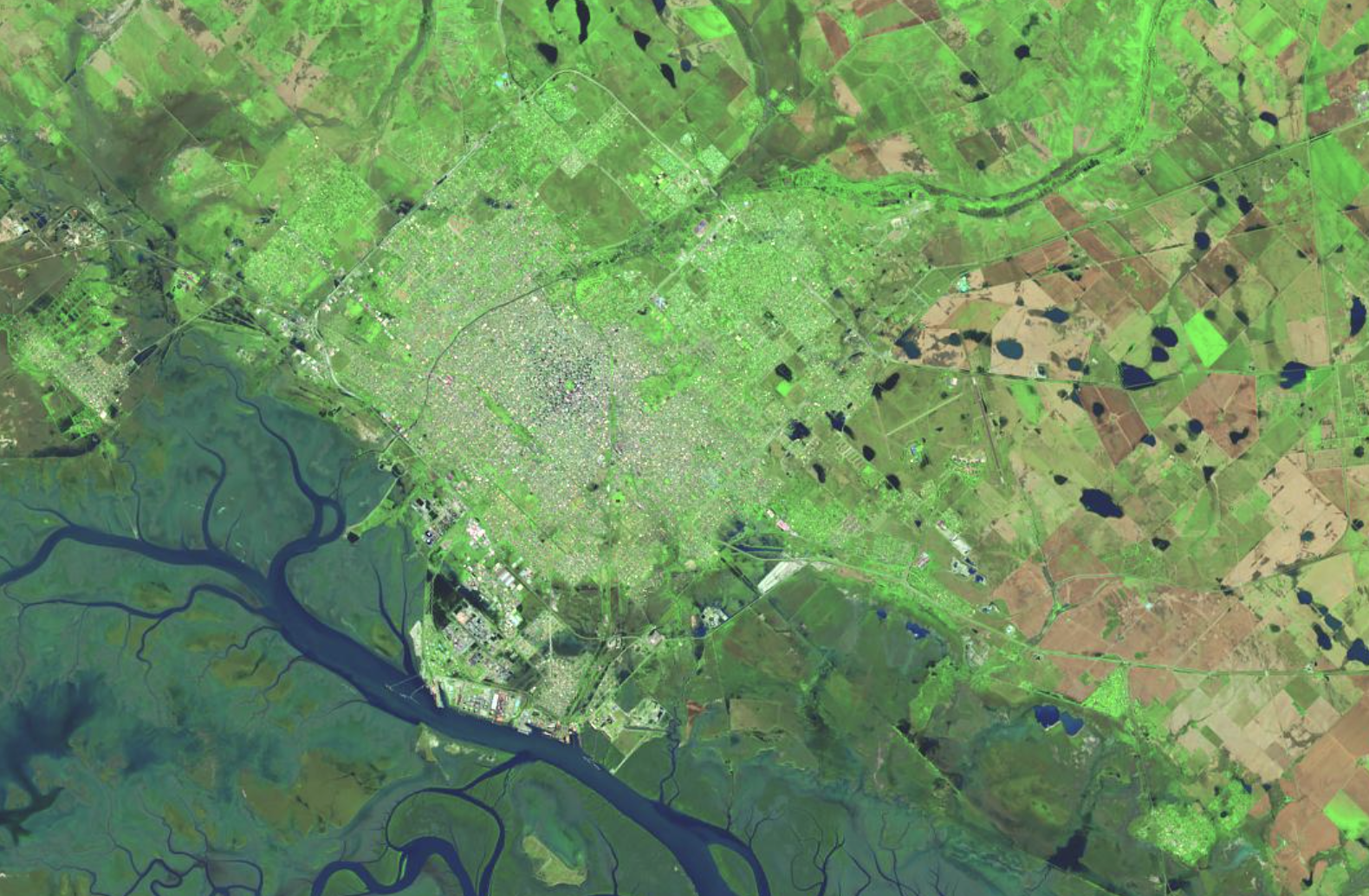ntense rainfall triggered deadly flash flooding in Bahía Blanca, Argentina, in late austral summer 2025. The city received approximately 400 millimeters (15.7 inches) of rain in 8 hours on March 7, local authorities told news outlets—about two-thirds the average amount the area sees in one year.

The false-color images above show the city and its surroundings on January 30 (left) and March 11 (right), before and after the rainstorm. They were acquired with the OLI-2 (Operational Land Imager-2) on Landsat 9 and the OLI on Landsat 8, respectively. The band combination (7-5-4) used in the images makes it easier to distinguish between water, land, and vegetation. Flooded areas are visible in developed areas, particularly near the coast, as well as in the surrounding fields.
The water level in the channels looks similar in the two images, but it fluctuates significantly with tides and weather. The average tidal range, or difference between high and low tides, at the Ingeniero White port is about 3.6 meters (11.8 feet). Prevailing winds that blow parallel to the main channels can accelerate or delay the tidal wave. Increases in suspended sediment after the storm may account for some of the variation in color between the two images. The rest of the estuary also appears more saturated.
The intense rain on March 7 set a record for daily precipitation in Bahía Blanca, toppling the previous mark of 175 millimeters (6.9 inches) from 1930, officials reported. A cold front moving through the region triggered the severe weather, causing warm, humid air from a recent heatwave to rise, cool, and condense.
Flash flooding submerged parts of the city in more than 2 meters of water, according to news reports. The deadly storm also forced the evacuation of a hospital and more than 1,000 residents from their homes. Floodwaters damaged roadways, causing multiple sections of National Route 3 to close. Bahía Blanca is home to more than 330,000 people and is a major port in Buenos Aires province.

NASA Earth Observatory images by Michala Garrison, using Landsat data from the U.S. Geological Survey. Story by Lindsey Doermann.

Ronaldo brings decades of expertise to the field of geotechnology. Now, he's sharing his vast knowledge through exclusive courses and in-depth e-books. Get ready to master spatial and statistical analysis techniques, and raise your professional level.